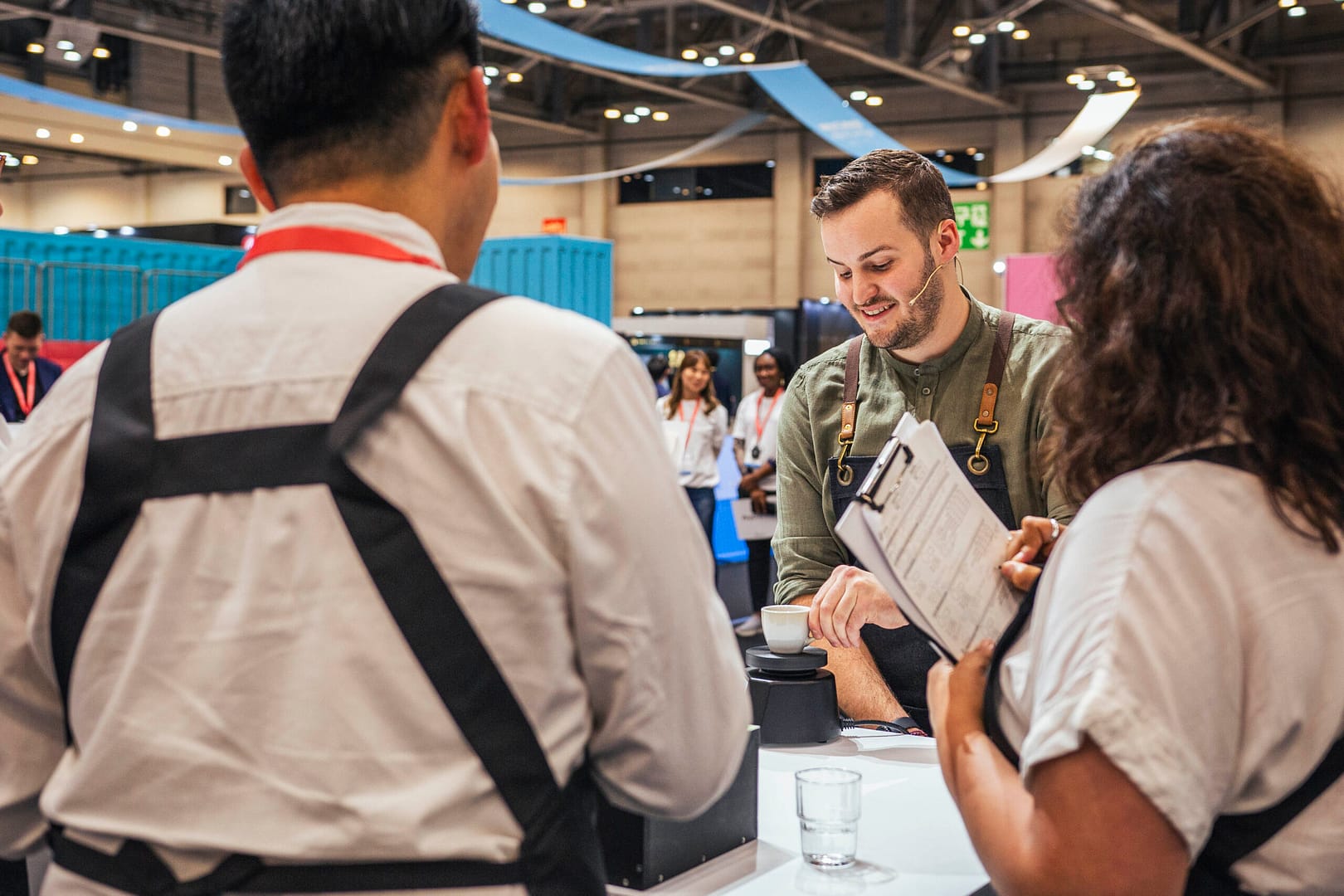The costs of competing at the highest levels of coffee, including the World Barista Championship, are significant. There are the time investments one must make to endure a grueling competition season, many beginning at a regional level before going to nationals and hopefully, the World stage. And there is of course the literal cost. Ultra-rare coffee, coaches, entry fees, travel expenses, lodging (for the whole team mind you), serving wares and accessories and all manner of cutting edge machinery to wow the judges, we’re talking tens of thousands of dollars per competitor. No cash prize awaits those proven victorious at the end; WBC winners can only hope to offset costs through future endorsements and professional opportunities.
But there is another cost, an environmental one. What is the ecological impact of competing at the World Barista Championship? In a fascinating new study, Kaffeemacher, the roastery represented at the 2024 WBC by German competitor Felix Hohlmann, calculated the emissions they created to put a competitor on the world stage, and their findings are staggering.
Titled “15 Minutes of Busan,” the project was undertaken by Tobias Milz of the Kaffeemacher:innen team in Denslaken, Germany and was based off Milz’s prior calculations of CO2 emissions by the multi-national coffee brand. Published on LinkedIn (which is where all the real social media action takes place these days), Milz and Kaffeemacher’s Philipp Schallberger found that participating in the 2024 World Barista Championship produced more CO2 emissions than the entirety of the company’s 2022 roasting operation. (More than 60 tonnes of coffee, or over 130,000 pounds.)
They estimate they produced 24.2 tonnes of CO2 as a result of participating in this year’s WBC. In diving deeper into where the emissions came from, they found that the overwhelming majority, over 93% of all CO2 produced, was due to travel. Airline travel for a five-person team produced 22.6 tonnes of CO2, itself more than the 22.1 tonnes the company created in 2022.
And this is from a company that has put significant effort into reducing their ecological footprint at every level of coffee production, from their own farm in Nicaragua to roasting practices in Germany and Switzerland.
So what is the answer to what Schallberger describes frankly as “brutal” emissions? Declining to compete seems moot. You may choose to forgo competitions, but there’s a long waiting list of folks who will gladly take your spot. The first step is to accept it, not run away from it, in hopes of finding solutions.
There are no easy answers here—people can use carbon emissions to create a series of “gotchas” on a wide variety of topics, and in some ways comparing air travel to coffee roasting operations is like comparing apples to oranges. But it remains a damn interesting data point. Threats of global warming have been encroaching on the sustainability of the coffee for years now, and the specialty wing of the coffee industry has repeatedly claimed to care about the relationship between coffee and carbon. For 50+ individuals each year to produce a full year’s worth of CO2 for a competition—one of several global coffee competitions—seems worthy of ongoing discussion.
In the meantime, all credit is due to Kaffemacher for doing the disturbing math.
Zac Cadwalader is the managing editor at Sprudge Media Network and a staff writer based in Dallas. Read more Zac Cadwalader on Sprudge.
<?php echo adrotate_group(54); ??><?php echo adrotate_ad(589); ??><?php echo adrotate_group(56); ??><?php echo adrotate_ad(589); ??><?php echo adrotate_group(69); ??><?php echo adrotate_ad(589); ??><?php echo adrotate_group(38); ??><?php echo adrotate_ad(589); ??><?php echo adrotate_group(51); ??><?php echo adrotate_ad(589); ??>
Zac Cadwalader
June 10, 2024


